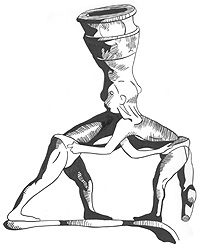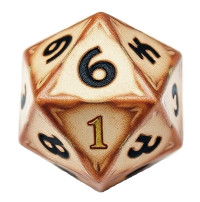| Basics |
|---|
|
1113 North Point Road, Suite H, Baltimore County, MD 21222 443-503-6465 www.practicalmma.com Monday: 9:00 AM — 11:00 AM, 4:30 PM — 10:00 PM Tuesday: 5:30 PM — 10:00 PM Wednesday: 9:00 AM — 11:00 AM, 4:30 — 10:00 PM Thursday: 5:30 PM — 10:00 PM Friday: 5:30 PM — 8:30 PM Saturday: Bi-weekly BJJ visiting coach sessions, special events Sunday: closed |
|
Mat Fee: $10 per evening, $5 per morning conditioning session Monthly memberships: Adult $85 [$60 with a 12-month commitment] Children $60 [$40 with a 12-month commitment] |
| Facility Features |
|
20 by 24 foot training area [no street shoes permitted] Fully matted, with floor double-matted and walls and equipment stands padded Customized steel-beam sliding bag array Speed bag 2 grappling dummies Boxing, kickboxing and karate sparring gear Mitts and kick-shields A crash pad for beginning judo 12 foot long by 6-foot high MMA fence with 'turn-buckles' First aid kit Janitorial supplies for mats and equipment Industrial fan Folding chair viewing area behind rolled wrestling mat just inside of overhead door Office with refrigerated bottled water for $1 next to front door Bathroom in rear Two dressing rooms behind the MMA fence |
| Curriculum |
|
Gojo-Ryu karate [Tom Clark] Self-defense [Tom Clark] Jissen-Ryu Jiu-jitsu [Tom Clark] Jeet Kune Do [Tom Clark] Japanese swordsmanship [Tom Clark] Kali [Tom Clark] Submission grappling [Chris Clark] Boxing [Tom Clark] Kickboxing [Chris Clark] MMA [Chris Clark] |
Traditional MMA
Yes, I wrote that, simply because it is the best way to describe this unique program. Tom Clark grew up boxing at the local Boy's Club, trying taekwondo, practicing judo, and studying karate in the 1960s and 70s. Back then what he did was called 'blending'. In the 80s and 90s it was called 'integrated' training. Now it is usually called Mixed Martial Arts, though not necessarily the sport of MMA. Sifu Tom relegates the wildly popular combat sport to the final rung of his training ladder. His afternoon courses start with 'family karate' progress through the traditional and eclectic arts of his curriculum, and are then 'blended' or 'mixed' with an eye on competition by his son Chris, at the end of the evening.
Tom has spent 26 years developing his brand of MMA in rec. programs and one other commercial venture. I met Tom through his students the Lumsden bothers in 2002 [see The Iron Dragon]. Where most traditional martial arts instructors have become uncomfortable with the direction MMA has taken, Mister Clark is at peace with his long-held traditions and the young combat sport. He is as relaxed with his karate kids as he is with his son's MMA mutants and expects and receives the very same level of respect from both.
Their approach is note sanitized, watered down, stifled or experimental. Tom and Chris have simply found a way to accommodate every type of person who, for various reasons, are drawn to martial arts study, and have employed an 'evolutionary' superstructure that permits diversified and unified training. The child in need of discipline; the lady in need of defense; the old guy trying to get in shape; and the young fighter looking to compete, are all able to coexist and benefit each other.
The Visit
It is 5:30 in the afternoon on a sweltering Thursday in mid-June. The facility is in the middle of what looks to be a 'shipping and receiving' industrial strip between a cheer leading school and EWA wrestling [see the Trent interview in Kid Sexy]. It is not a big facility and the evening sun is beaming through the open overhead door. Mister Clark rolls his minivan up behind the open door to shade the seating, cranks up his fans, and permitted his students to go without gi-tops in the 101 degree heat.
Tom is an average-sized man in late middle-age with a very reserved demeanor. One is surprised to hear him 'Kia!' with authority. He greets me warmly, informs me that he will be calling me out on the mat for some boxing, and introduces me to his students, including Lance, an older student recovering from an ankle sprain who has come to watch class.
The facility is small but extremely well laid out. Retail managers would make their insurance carrier's lawyers much happier if they had the eye for safety that Mister Clark demonstrates. This is the best thought out equipment-safety scheme I have seen. Mrs. Clark operates the business from the tiny front office. Mister Clark is delayed in beginning class somewhat by membership inquiries, ventilation concerns, and in giving me a rundown of his operation. All of the students sign in on a spiral-bound attendance book, and those who are not members lay a ten dollar bill on the book. This will cover their evening for as long as they wish to remain.
Family Karate
5:40 [the facility is opened at 5:30, so the start of the first class lags a little] The American, Japanese, Filipino, Chinese Nationalist and Brazilian flags hang above the matted wall before which the teacher and assistants stand. The uniforms are not identical and not all complete. The variously colored rank belts are present, and Sifu Tom instructs one student in the correct method of tying the belt. He is dressed in Muay Thai shorts and a kali shirt. He is flanked by two college-age male assistants in gi-pants and sweat-pants, wrestling shoes and T-shirts: one a brown belt, the other black.
5:56 PM The instructors face their students who have their backs to the bag array. There is one adult green belt, 6 children of various ranks, and one young lady.
After the students bow in Sifu Clark calls a huddle and asks, "What is a kata?"
A discussion of the purpose and value of katas is followed by a discussion on the importance of not using martial arts to bully. Sifu Clark ends by stressing the importance of visualization, and points out that their katas begin with a defense and counter.
The students return to their line-up and are called upon one at a time to chose and announce which kata they will demonstrate. The students then perform their katas individually, and advance to be critiqued by the assistants. It is obvious that Tom is using this as an opportunity to evaluate his assistant's teaching ability. Mister Clark limits his comments to the student's spirit, stressing the importance of their 'kia' as a reflection of the intensity of their visualization.
6:20 Each student is detailed to a bag or grappling dummy for striking practice. Everyone has something to hit. Sifu Tom reminds them that each type of bag is for practicing a different technique or combination: front kick on the Thai bag; side kick on the heavy bag; front-side-round kick combination on the karate bag; one-two-three punching on the uppercut bag; ground-and-pound on the grappling dummy, etc. The students are directed to work each technique or combination for 30 seconds and then proceed to the next piece of equipment. This continues until all eight students have used each apparatus. At the end of the drill cycle Tom reminds the students to focus on a specific part of the bag when striking.
6:30 Mister Clark gathers the students into a huddle and begins a discussion, "What does respect mean?"
He guides the discussion more closely than the one on katas and finishes with, "You have to learn respect for others, respect for yourself, and discipline."
Tom later confides in me that this discussion was at the request of a mother who was having trouble with her son respecting her at home. He considers this type of intervention to be at the core of a martial arts instructor's responsibility. It has provided him with the chance to help a few troubled young men to stay out of trouble and chose a productive lifestyle, including at least one instance where he encouraged military enlistment, "I never felt better than when that young man came back from the Navy and told me how taking our class had changed his life for the better."
6:35 The students come to attention in their final line-up, salute, take a moment to meditate, and then repeat the three school virtues [which I could not clearly hear because of the fan I was sitting next to]. They then shouted and bowed out.
Jissen-Ryu Jiu-jitsu
6:40 Sifu Tom excuses gi-tops for the heat. He then comes over to me while the tops are being taken off, "I don't think there is any class where we don't blend hard-and soft and use techniques that are going to be useful in a 'street' self-defense situation."
While Mister Clark is speaking with me his two assistants lead the class in stretching.
Tom supervises as his two assistants coach the adult green belt, the oldest boy, and the young lady from the previous class.
6:45 Sifu Tom gathers the students into a huddle to discuss the judo throw they are about to practice. They then form a semi-circle with each student advancing to the others one at a time to perform a clinch and hip toss. Slow motion throws were encouraged on the various body types in an attempt to impart each student with a feel for their center of gravity. This looks like a leverage workshop to me.
6:50 The assistants now pair up to work the clinch and throw while Tom instructs the three students. They advance to single leg-take downs and back up again to work on break-falls with the white belt.
A dragon fly buzzes the author and then gains elevation to inspect the flags. The grappling then advances to a counter for the single-leg takedown and an advance to side-control.
7:05 The students then pair up with the odd one using a grappling dummy, and begin working guard principals on the ground.
7:09 Tom calls a water break and announces that a visiting BJJ coach will be teaching every second Saturday for a mat fee.
7:11 Mister Clark supervises 'grappling sparring', calling for a restart after a superior position is achieved. He is having a lot of fun. His first reaction to an effective technique is to smile.
7:20 Tom calls me to the mat and has me do a brief hooking clinic. I cover the shovel, Philly, and Detroit hooks.
7:30 Tom reviews my material and puts it in context. We have a simple farewell. Tom then announces that Sean, one of their MMA fighters, will be competing on Saturday the 23rd at the Maryland Cage Brawl, and that he has tickets for sale. Mister Clark then asks me to describe the event I reviewed back in April for his students. I complain about the loud music and they laugh.
Jeet Kune Do
7:34 Mister Clark asks me to take the mat with him and integrate the hooks into combinations with jabs and straights. He lines up besides me and his two assistants join the adult green belt, the young lady, and a newly arrived adult white belt in the lineup. We work open-side and closed-side combos on the bags and mitts.
The coolest part of this session is what Tom does with his injured man Lance, who still sits on the sidelines practicing the boxing material in his chair. Tom takes his mitts to the mat-edge and has Lance sit on the rolled wrestling mat and practice the combos.
I really work the green belt and young lady and review the material with the assistants who coach each other and the adult white belt. Tom and I settle into a pattern of me demonstrating the specific technique with him integrating it into their curriculum and openly quizzing me on gloved and bare-knuckle applications. Tom breaks down the mechanics and stresses the importance of foot work.
Mixed Martial Arts
8:34 As we say our farewells on the mat Chris and five really fit looking young fighters show up for training. Chris and I discuss possible sparring options and I have the chance to interview Sean, Sal and Jesse. The body types range from Sean Kelly at 6' 5" and 185 lbs to stocky Jesse Page. As I watch them warm up I detect no 'team style' but notice each fighter has been groomed along his own lines. At first glance these guys look like they could be extras in a biker movie or a Conan film. After a few minutes it is obvious that they are good-humored fighters who dedicate themselves to their conditioning routine.
Mister Clark now comes to sit beside me as his son Chris takes over. He nods at the muscular tattooed young men, "So what do you think?"
"You know Tom these are the guys who would have been in boxing gyms when we were kids."
He nods yes, "I never thought of it like that."
I say, "You know, they look so scary, but they're really nice guys."
Tom sits back a little and interlaces his fingers, "If I have some guy showing up to hurt people—they're out there, guys that go from gym to gym to build their egos hurting people—I show them the door. I don't do this for the money. They can keep their money. If you keep people like that then the good people start to leave. I want respectful fighters. Even when they are at the bar they represent my school. Respect is the highest value—what I like about the traditional arts. We carry that over into MMA here..."
"... I learned a lot from going out to Dan Inosanto's academy. He is the shining example of the martial artist; no ego, open, not afraid to try something he isn't good at. I want good fighters, but they have to be good men first. Even if they aren't the most gifted athlete they can turn a fight around with character...[like] the gifted athlete can turn things around with talent."
Tom and I discuss things on and off as we watch the young men train. He breaks occasionally to take photos of noteworthy techniques. I am sitting next to a man who is enjoying that rare modern pleasure: a son taking up his art and passing it on.
Chris Clark is a really fit young lightweight with a sharp mind and good coaching voice. He leads his men through a warm up that would kill me with a combination of technical notes, humor, and dogged encouragement.
8:40 group warm-ups.
8:45 pummeling [a Greco-Roman clinch drill]
8:47 'chairs' footwork sprints
8:50 shrimps [what I did for all six minutes of all three of my wrestling matches]
8:52 wall squats
8:54 stretches
Chris is best when he is coaching the ground game. His attention to bio-mechanical details is very acute. He approaches positions in grappling like a boxing coach does footwork.
9:00 guillotine defense, side-control drills
9:30 water break
9:35 guard drills
9:45 water break
9:46 Sean is put into 'the shark tank' and made to ground spar with each of the other fighters, and the grappling dummy assisted by Chris, and then with Chris. Sean has won one fight by KO and lost the other by arm-bar. Chris's primary concern at this late date is ground defense. Sean finishes by mounting and ground-and-pounding a grappling dummy.
9:56 the fighters lineup and break with handshakes.
10:00 the fighters all pitch in to clean and sanitize the mats
10:05 Chris and I discuss sparring options with boxing and MMA clubs with whom I work or am on god terms. He then gives me a bottle of water and a lift to the nearest bus stop, and swings back around to make certain I'm safe. He then heads off to Home Depot for supplies. Tom and Chris Clark are working hard; splitting almost 40 hours per a week of instruction.
Conclusion
I am equally impressed with the remodeled facility, the progressive integrated curriculum, and the school spirit. If you are a grappler, MMA fighter or boxer, Chris would be glad to have you stop in for sparring or conditioning. If you are a martial artist looking to cross-train stop in and talk to Sifu Tom. If you are a beginner who is not quite sure what direction you want to take, just pay a $10 fee and stay for the whole evening and see what clicks.
The school's official grand opening is July 2012 and discounts will be extended through August.











do we pummel every work out ?
how many clinch throws will i learn in a year ?
got crash mats ?
i hate leg grabbers and refuse to do that my self.